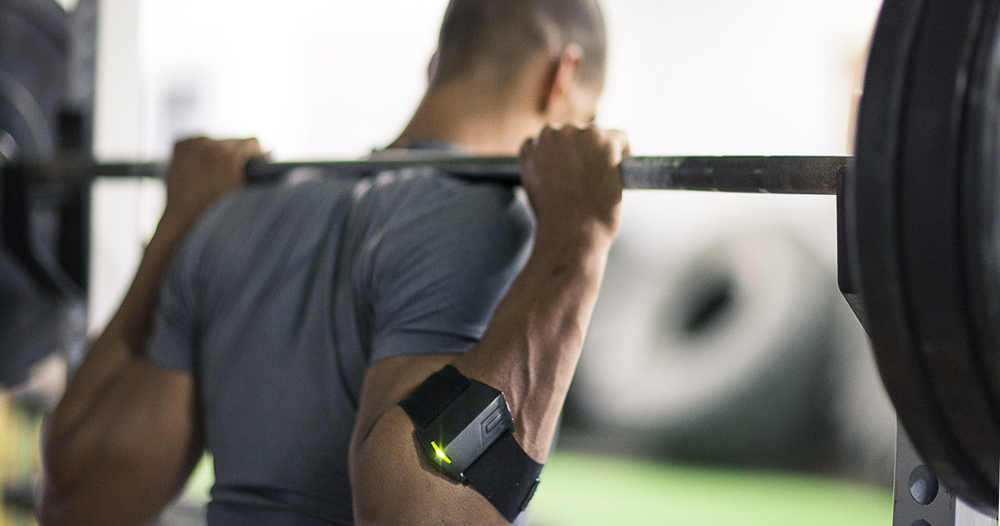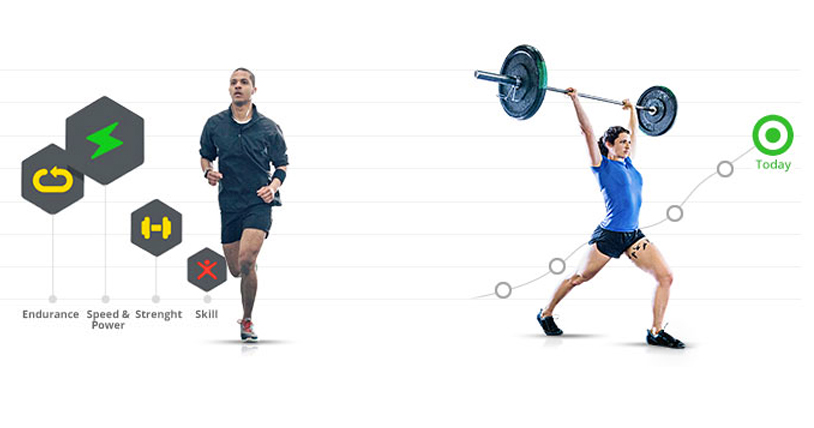Why Simplicity in Strength & Conditioning is a Systemic Necessity
I’m giving this knowledge a solid 3 on my finger scale—Last Boy Scout style—and if someone had told me this twenty years ago, I’d have skipped a decade of overcomplicated nonsense and gotten to the good stuff a hell of a lot faster.
Simplicity is not less – it is clarity amidst complexity. It is the superpower in S&C that very few coaches understand and use. In this text I will show you why you only maintain control if you free yourself from complexity – and how you can build a system that truly works with strong principles.
For a long time, simplicity was just a quote for me. Steve Jobs said: “Focus means saying no to 100 good ideas.” Da Vinci wrote: “Simplicity is the ultimate sophistication.” And my all-time favorite from Zeus himself: “Perfection is not achieved when there is nothing more to add – but when there is nothing left to take away.”
The real breakthrough only came when I truly realized the importance of simplicity in S&C.
Why you cannot control a complex system (the athlete) with complex plans. And because this understanding changed everything for me – my coaching, my planning, my language – I want to share it with you here. So you can take the same step. And stop sinking in the fog of information overload.
We live in the age of endless options. It has never been easier to emerse yourself in “new knowledge”: spinal engine, eccentric quasi-isometrics, ascending–descending potentiation cluster, Bosnian-Herzegovinian triple-pyramid periodization.
A new approach every week. Every sports scientist with a new super method. And there is you with the feeling: the gamechanger is hidden somewhere.
I should learn even more methods, collect more data, attend more courses. Add more stuff. Think even more differentiated, to maximize results. But the opposite is true. Not the one who knows everything delivers the best results – but the one who grasps what is relevant. We don’t need more breadth, but more depth.
The Athlete is Not an Object – He is a Living, Complex System
We often say: “The Athlete is a complex biological system.” But what does that really mean?
The word “complexity” comes from the Latin complecti.
- com means “with” or “together.”
- plex comes from plectere which means “to weave,” “to interlace,” “to entwine.”
So literally, “complex” means: “interwoven with something” or “many things woven together”.
A complex system is a web of relationships in which you cannot isolate cause and effect. Every action is intertwined with other dynamics, contexts, feedback loops. That means the athlete does not function like a machine. You don’t just put in a stimulus and automatically get a predictable adaptation out. Its an open system that constantly reacts to everything: environment, emotions, sleep, thoughts, experiences, self-image.
It doesn’t just react to training stimuli – it interprets them. This means as coaches we are not operating in the domain of certainty or risk, but in the domain of uncertainty.
That means we have no fixed probabilities, no exact predictions, no guarantees. We work with systems that change themselves while we observe them. The same training approaches can lead to different results. And different training can lead to similar adaptations. In short: the outcomes are never exactly predictable.
Just look at some data on inter-individual adaptation in athletic training: it’s wild how differently athletes respond to the same training stimulus – one makes solid progress, the next stagnates, and another one even gets worse from the exact same intervention.
How Complexity Arises and Why That Changes Everything
One might think that something as incredibly complex as nature (humans, the universe) must be created through incredibly complex mechanisms – but it’s exactly the opposite: “Beauty often comes down to simplicity.” From radical simplicity, enough time, and feedback, what we consider unfathomable unfolds.
Simple rules + time + feedback = emergent complexity
That’s how nature works. Four bases: A, T, G, C. Four building blocks from which billions of life forms emerge. From fungus, to whale, to you. Not because there’s a master plan. But because these four building blocks are endlessly recombined, react locally, and are fed back.
The result: Diversity. Complexity. Adaptation.
The famous Mandelbrot fractal is based on a very simple equation: z → z² + c.
When this formula is iterated over and over, an infinitely complex image emerges, which reorganizes itself at every zoom – with patterns, self-similarity, and ever-new forms. Whether Mandelbrot fractal, DNA with its four bases, a growing tree, or the dynamics of the universe – it’s always the same principle.
Alan Turing – yes, the brilliant guy who cracked the Nazi code – described in his Morphogenesis paper in radically elegant fashion: patterns – like leopard spots or seashell spirals – do not arise from a plan, but from so-called reaction-diffusion systems. Nobody could explain it at the time – and people didn’t believe him, because he wasn’t a biologist but a mathematician who suddenly started cracking the secrets of life. Two chemical substances, which react locally and spread at different speeds, produce stable forms. No central plan. Just: simple rules + feedback + time. And training should work exactly the same way.
The Bias–Variance Dilemma in Athletic Training
The bias–variance dilemma is one of the most powerful concepts for understanding why many training systems fail – and why simplicity in coaching is indispensable. It originally comes from statistics, but it can be brilliantly applied to S&C. Because in the end it’s always about the same thing:
How well does my model (my plan, my intervention) fit reality – and how confident can I be that it works?
The dilemma describes the unavoidable trade-off between the sources of error: bias and variance. Bias means distortion, systematic error, one-sidedness. Variance means fluctuation, spread, inconsistency of results in a system. If you try to reduce bias, you have to make your system more complex – e.g. to account for more individual differences. If you want to reduce variance, you have to simplify your system – through standardization, structure, and clear rules. But the more you do one, the more the other suffers. And that’s the dilemma.
What Factors Determine How Simple or Complex Your Model Can Be?
1. Amount and Quality of Data
This means all the data that supports your decisions. For example:
- Feedback data like RPE, wellness, jump height, body language, etc.
- External data like scientific evidence
- Historical data from your team or athlete
- Contextual data (environmental influences, game load, travel, stress)
- And also coach data: your experience database, observational logic, intuition, etc.
The fewer data you have – whether because you work with many athletes at once or because your measurement methods are unreliable – the more you must simplify.
2. Number of Alternatives
The number of possible training alternatives is unlimited. There are countless ways to structure S&C or sport-specific training within different timeframes (day, week, month).
Just the number of exercises is huge – and on top of that:
- Variations in execution,
- Rest times,
- Density,
- Coaching style,
- Set-rep schemes,
- Combinations of training methods,
- Periodization models
You see where I’m going: diversity sounds good – but it costs controllability. We get lost in this infinity of options. Because the more alternatives you leave open in your system, the more variance increases – and the harder it becomes to draw reliable conclusions.
If you constantly add new exercises or constantly tweak small parameters, at some point you can no longer say what actually worked – because you lack reproducibility.
Fewer options = less noise = more comparability.
That doesn’t mean you should dogmatically stick to three exercises – but you need a clear selection logic and the ability to make decisions reproducible.
3. Degree of Uncertainty
The third factor is the system environment itself – the degree of stability or chaos in which your training takes place. These are not data you can directly collect, but more the background noise of life – or in other words, the playing field on which your model runs, which you can never fully capture.
- Athlete’s daily form
- Biological fluctuations
- Unpredictable events
- Stochastic behavior of complex systems
We dont train in a lab. We train in real life – in everyday situations, in groups, under pressure, under fatigue, under emotional load. And you work with a system that constantly fluctuates within itself: the athlete.
Uncertainty is not just external – it’s built into the athlete himself. You never know exactly how the athlete will respond today. What worked a year ago may not work today – because the system has changed.
“No man ever steps into the same river twice, for it’s not the same river and he is not the same man.” – Heraclitus
In team training, extremes are absorbed – through redundancy, patterns, probabilities. One sleeps poorly, another player is at peak – on average, the plan still fits. But be careful about the extremes.
But n=1 is brutally honest, individual, and hard to calculate. There is no corrective through the group average, no statistical smoothing.
Team training tolerates more bias – individual training needs more variance. In groups, a rough model works for many, in 1:1 you need more flexibility so as not to plan past the individual.
Conclusion
In S&C we always work with little usable data, a high number of alternatives, and a consistently high degree of uncertainty. Therefore, the only answer to this situation is …











Responses